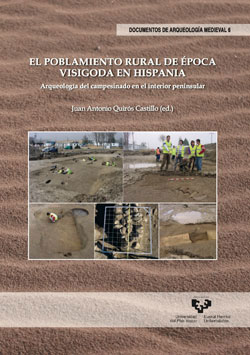The Visigothic rural settlement in Hispania. Peasantry archaeology in the inner Peninsula (2013).Abstract

This volume is the result of the collaboration between two of the leading archaeological companies operating in the centre of Iberia (Stratoand Area) and the University of the Basque Country. The work has three main objectives:
- Eleven rescue archaeological projects conducted between 1996a nd 2009 in Madrid and Castile and Leon are presented. These reports have not already been published, and illustrate some of the best cases of villages and farms from the Visigothic period excavated in central Iberia.
- A second aim is to conduct a comparative analysis of these peasant archaeological records, including internal spatial structure of these deposits, domestic architecture, burial practices and archaeobiological records, in order to characterize the early medieval peasant societies of these peninsular areas.
- The third aim is to analyse the social meaning and the historical implications ofthese new archaeological evidences in the light of other available archaeological and historical data to study how the central Iberia territory has been articulated between 5th and 9th centuries.
The bookis divided into three main parts. The first section presents the results of the eleven archaeological preventive interventions conducted in the provinces of Madrid, Segovia, Leon and Valladolid. In order to systematize and facilitate exposure and comparison between these deposits, the archaeological data are presented in a standard form that has been designed for the occasion. Secondly, it includes other chapters devoted to an analytical study of twoof the main themes and characteristics of these deposits (architecture and funerary archaeology) comparing various information provided by the different settlements. Finally, it presents an interpreting essay of the early medieval villages and farms in the centre of the Iberian Peninsula within the context of the archaeology of the Visigothic period societies. It has also been includedan initial chaptert hat tries to explain the contextin which these interventions have been conductedand the nature of the archaeological record.
